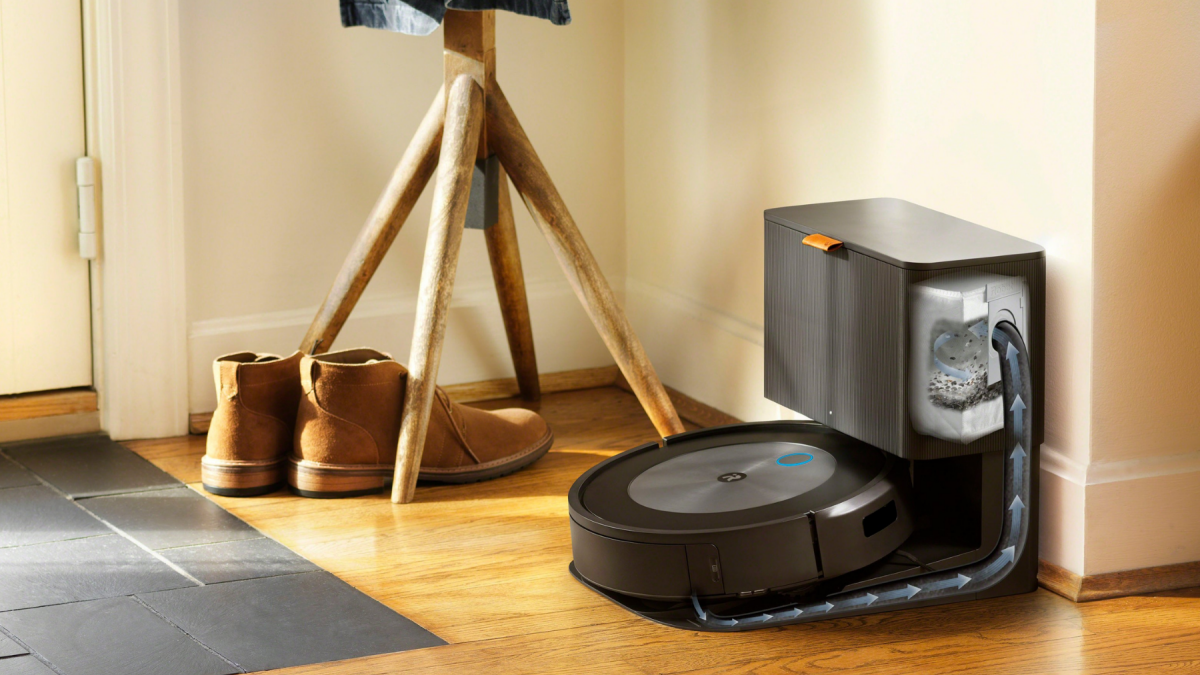
UPDATE: Apr. 5, 2023, 2:00 p.m. EDT This story has been updated to include the best deals on robot vacuums from iRobot, eufy, and more.
Only three things are certain in life: Death, taxes, and a few days each month when you need to vacuum but just don’t have time. Whether you detest the chore or hope to make your home upkeep a bit breezier, a robot vacuum is a lifesaver. Shop models on sale below.
Robot vacuums under $200
Why we like it
You won’t get smart mapping at this price point, but the Eufy 30C does navigate more nimbly than the similar 15C thanks to its included boundary strips. It manages to squeeze out more than an hour of cleaning on Max mode, and has suction more than strong enough for hard floors and light carpet upkeep.
More robot vacuums under $200
Robot vacuums under $500
Why we like it
A self-emptying Roomba retailing for less than $300 is already a steal — so even this slight discount is significant, bringing this starter Roomba below the $258 we saw on the same vacuum near the 2022 holiday season. iRobot’s i Series don’t have smart mapping, but the i1+ still maintains wall-to-wall coverage by cleaning in neat rows and honing in on dirtier spots with Dirt Detect.
More robot vacuums under $500
Robot vacuums under $800
Why we like it
Samsung’s website and Amazon are constantly duking it out for the best price on Samsung’s most advanced robovac. Amazon is currently winning with a 48% price slash that definitely makes this vac worth it.
Like the Roomba j7+, the Jet Bot AI+ uses an array of 3D sensors to identify small obstacles that other robot vacuums usually eat, like cords and pet waste. Like the Roomba s9+, the Jet Bot AI+ has one flat edge that offers pristine corner cleaning and wall trailing. What sets the JetBot AI apart is an onboard security and pet camera that can live stream directly to your phone.
-
Room mapping, zone cleaning, and small obstacle avoidance
-
90-minute battery life
-
Self-emptying dock holds up to two months’ worth of debris
Robot vacuum and mop hybrids and dedicated robot mops
Why we like it
Roborock debuted a slew of new robot vacuums in 2022. Of the new Q Series, the Q7 Max is the most advanced model that opts out of the self-emptying dock. For only $50 more than the regular Q7, the Q7 Max deploys around 35% more suction power, making it an obvious pick for homes with pets or lots of carpeting. Those carpets won’t get wet, though, as the Q7 Max knows to lift its mopping pads when carpet is detected.
More hybrids and robot mops on sale
What to consider when buying a robot vacuum
Suction power is key
A vacuum is the one purchase that you hope sucks a lot. Suction power is typically measured in Pascals (Pa), with most current vacs ranging between 1,500 Pa and 3,000 Pa. Stronger sucking will be needed to pick up heavier pieces of debris (be sure to set a no-go zone around Legos) and to pull matted-down pet hair from rugs.
Know your floor type
Carpeting and high pile rugs will probably require stronger suction than hard floors, as well as special features like an extra-wide or self-cleaning brush roll to prevent hair from wrapping and clogging. Folks in homes with multiple floor types might consider a bigger, sturdier robot vacuum that can hurl itself and its wheels over mats, rugs, and transitions from carpet to hard floors.
Consider automatic emptying
Because robot vacuums are typically under four inches tall, their onboard dust bins are also small — which means they frequently require emptying. (Dustbins fill up particularly quickly in homes with pets.) A self-emptying vacuum takes that job out of your hands, emptying itself into a larger dustbin in its charging dock. These larger bins can typically hold weeks of dirt without needing to be cleaned or dumped out.
Think about your home’s layout
Every robot vacuum is equipped with sensors and drop detection. But if your home has lots of rooms, lots of turns, or lots of close-together furniture, you’ll have fewer navigation issues with an advanced model that uses intelligent mapping to remember exactly how your home is laid out, including labeling of specific rooms, mental notes of staircases, and ability to deploy zone cleaning.
Pay attention to low-profile furniture
No one should have to be scared about what’s accumulated under their couch over the past year. A robot vacuum measuring three inches or less in height should be able to scoot under most low-hanging couches and beds.
Assess battery life and square footage
One of the main complaints people have about their robot vacuum is that it craps out in the middle of the floor. Larger spaces require more time to clean, and it all depends on how annoyed you’ll be if it only finishes a few rooms at a time. Average run times for the list below range between 90 and 200 minutes, which translates to about 500 and 2,800 square feet covered on one charge.
Look for app control
WiFi-enabled robot vacuums can be synced with a smartphone app to control scheduling, manual start, and cleaning settings, as well as telling your vac to make its rounds when you’re not home. Low-end models that don’t connect to WiFi will usually come with a separate remote. If you’re used to asking Alexa or Google to turn off the lights or tell you the weather, a model with voice integration will blend in nicely.






